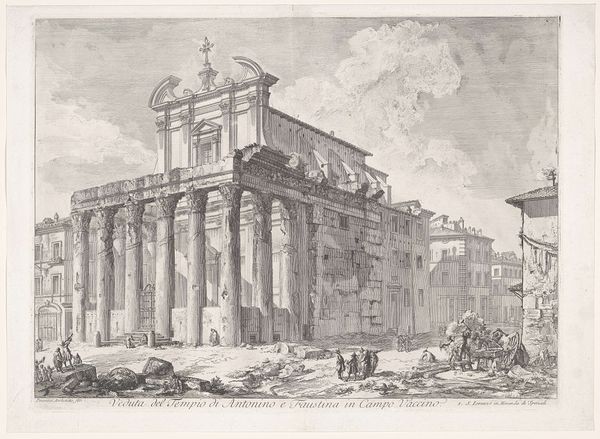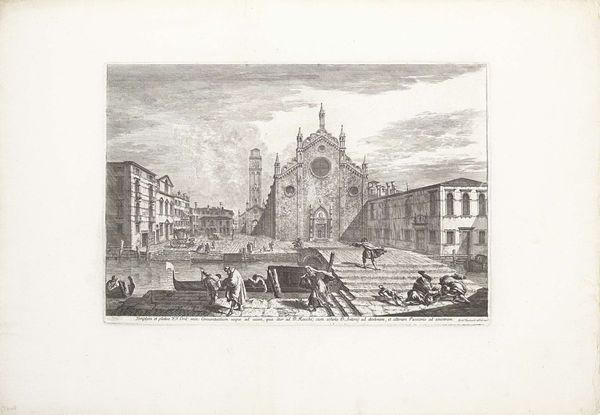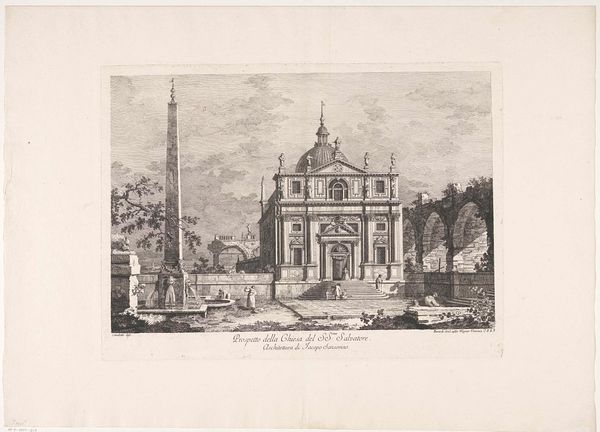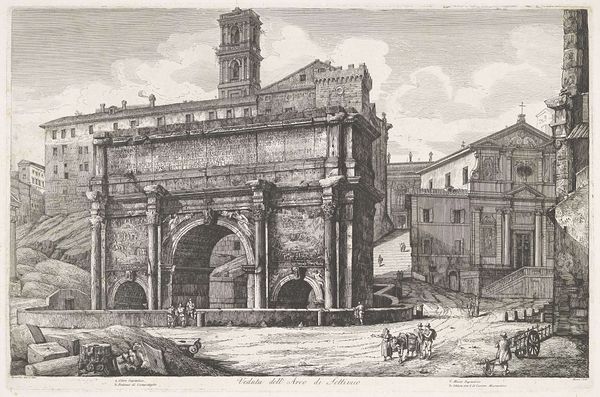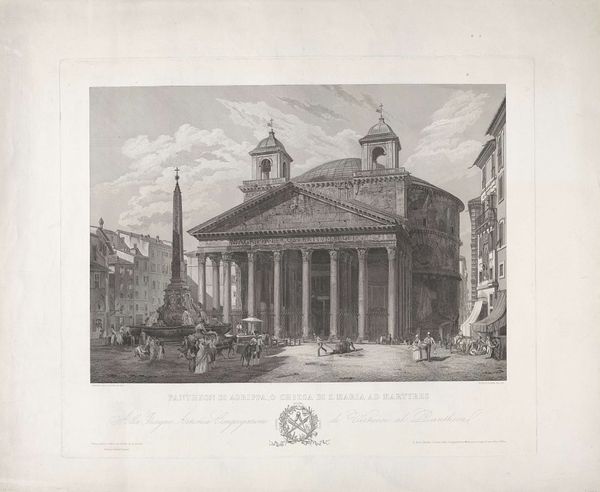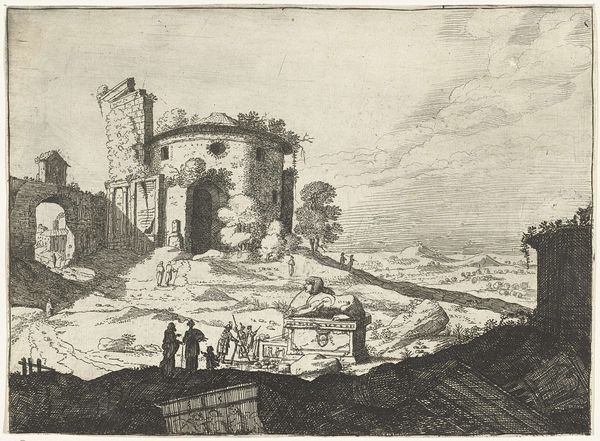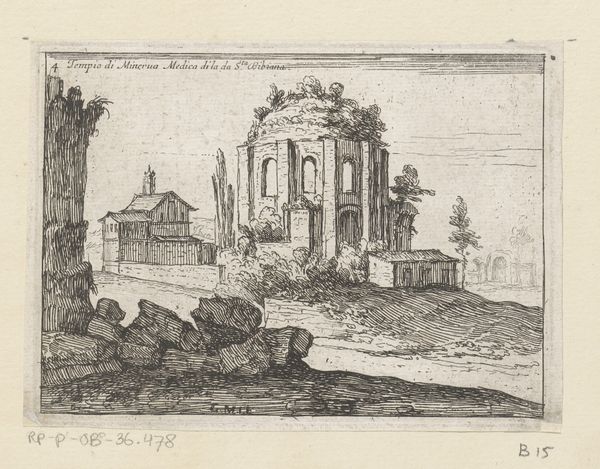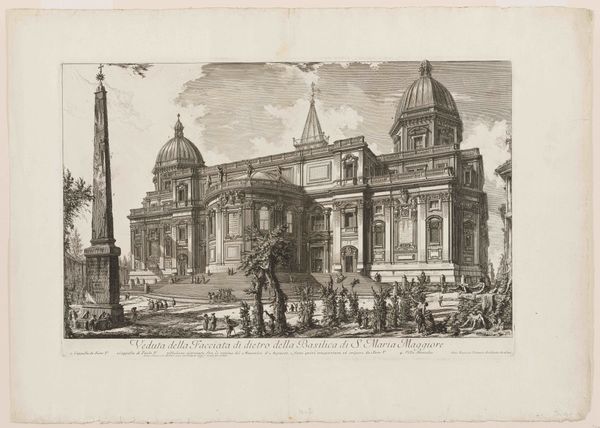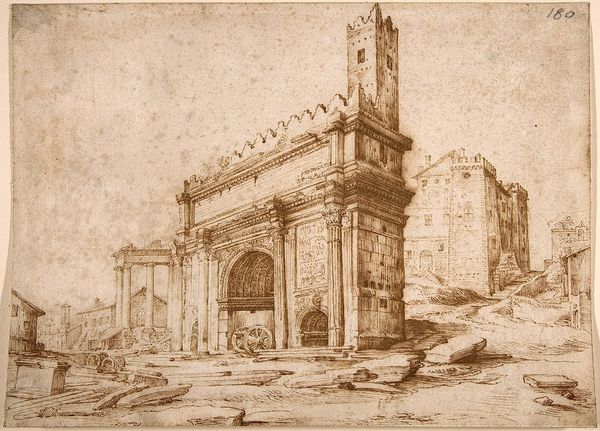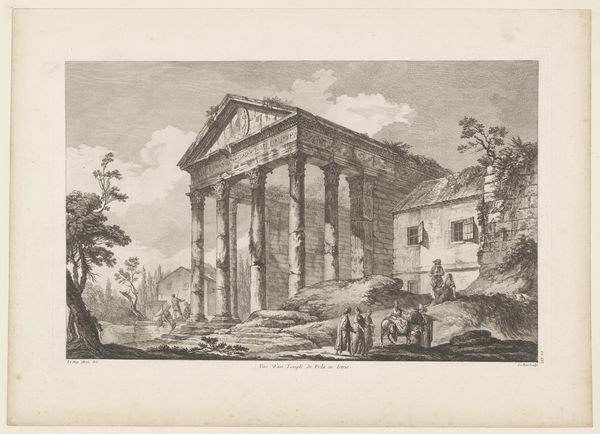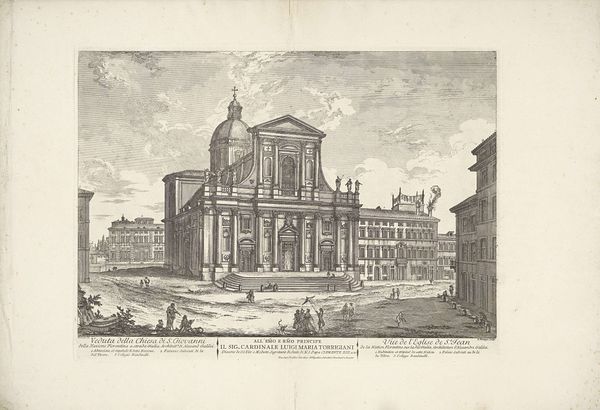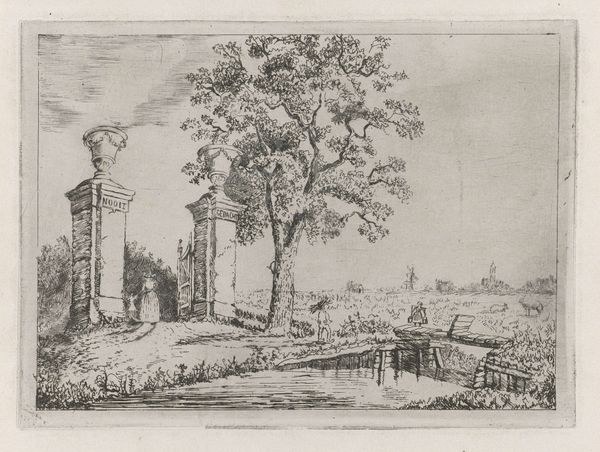
Dimensions: height 350 mm, width 484 mm
Copyright: Rijks Museum: Open Domain
Editor: This is "Il Redentore te Venezia," a print made sometime between 1738 and 1800. It's quite detailed, a cityscape etched in what they call an old engraving style. It almost feels like a postcard from another time. What catches your eye when you look at it? Curator: The composition is very carefully constructed. The church itself is obviously meant to dominate. Look how it mirrors and complements that tower on the right, each echoing the other in form but distinct in their presence. And that obelisk to the left—note how that pulls the eye through space. How does the architecture speak to you? Editor: I hadn't really noticed those connections, but now I see the mirroring. It does feel intentional. Is there a particular message conveyed? Curator: The message is multilayered, I believe. Churches and towers speak to human aspiration. The figures traveling by water—notice how they move towards the Redentore church—imply pilgrimage, a journey of faith or perhaps penitence. The Redentore was built as thanksgiving after a plague. Do you notice how the image connects religious hope and communal recovery? Editor: That context really changes my perception. The people aren't just travelling; they are on a symbolic journey toward hope and recovery. I’ll think of that every time I see the print. Curator: Visual symbols, charged with memory and hope. The image resonates because it represents cultural continuity in times of fear and uncertainty. Etchings like this allow the present to look back at the past, reminding us we are part of a larger story.
Comments
No comments
Be the first to comment and join the conversation on the ultimate creative platform.
